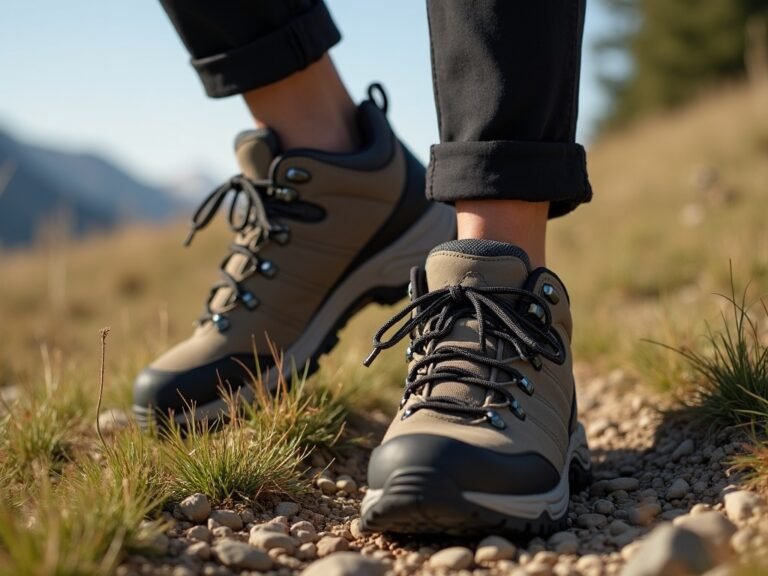How to Choose the Best Camping Lantern for Your Adventures

How to Choose the Best Camping Lantern for Your Adventures
When the sun dips below the horizon and darkness blankets the forest, your entire campsite relies on one small but mighty hero—your lantern. A reliable glow not only keeps the adventure alive after dusk, it creates the cozy ambiance that turns a tent into a temporary home. But with so many options flooding the market, how do you separate the gimmicks from the gear that actually works?
From ultralight backpacking trips to family car camping weekends, choosing the Best Camping Lantern is about more than just lumens. It’s about battery life, portability, beam spread, and even mood lighting. Some lanterns are built to withstand alpine blizzards; others are designed to hang elegantly from your tent ceiling.
Whether you’re prepping your camping gear for the first time or upgrading for your next rugged getaway, this is the camping guide you didn’t know you needed. We’ll break down all the features, pros, and trade-offs that matter when it’s just you, the wild, and a circle of light in the dark.
Let’s shed light on the choices—so you can spend less time scrolling and more time stargazing.
Why Choosing the Right Camping Lantern Matters
Ever tried pitching a tent in the dark? It’s not fun. A good lantern lights up your space, keeps you safe, and helps you enjoy your time outdoors. But it’s not just about grabbing the brightest light you can find. The best camping lantern for you depends on how you camp, where you camp, and what you need it for.
Let’s break down the key things to think about before buying a lantern.
What to Consider When Buying a Camping Lantern
1. Brightness (Lumens)
Brightness is measured in lumens—the higher the lumens, the brighter the light. But more isn’t always better. Think about what you’ll use the lantern for:
- 50-100 lumens: Great for inside a tent or close-up tasks like reading.
- 100-300 lumens: Perfect for lighting up a picnic table or small camp area.
- 300-700 lumens: Ideal for larger spaces or walking around at night.
- 700+ lumens: Overkill for some campers, but useful if you’re in a big group or exploring wide areas.
Tip: Look for lanterns that offer adjustable brightness levels—you’ll thank yourself when you want softer light for relaxing and stronger light for cooking at dusk.
2. Battery Type and Life
Next up: power sources. Your lantern’s battery type affects how long it lasts, how heavy it is, and how convenient it is on the trail. Here are the options:
- Disposable batteries (AA, AAA, D): Easy to find, but you’ll need to bring extras.
- Rechargeable batteries: Eco-friendly and cost-saving over time. Just remember to charge before your trip.
- Solar-powered: Great for long trips if you’ll have steady sun. But not the most reliable on cloudy days.
- Hand-crank lanterns: These generate their own power with a crank or wind-up—handy in emergencies, though they can be dim and tiring to charge.
Battery life also matters. Some lanterns last 100+ hours on a low setting. Choosing one that balances light output and battery duration will save you from constantly switching batteries or recharging.
3. Size and Weight
Are you car camping or backpacking? Your answer tells you how much bulk and weight you can handle. For car campers, a heavy-duty lantern with all the bells and whistles might be fine. But if you’re hiking into the wilderness, weight matters—a lot.
- Car camping: Go wild—larger, brighter lanterns are okay.
- Backpacking: Stick with compact, lightweight, and efficient battery-powered lights.
I once brought a full-size propane lantern on a backpacking trip and regretted it by the first mile. My shoulders were sore, and I barely used it. Don’t be like me—choose wisely!
4. Light Source: LED vs. Fuel
Most modern camping lanterns use LED lights, but fuel-based lanterns (like propane or butane) still have their place. Let’s look at both:
- LED Lanterns: Safe (cool to the touch), efficient, long battery life, adjustable brightness. Most are weather-resistant.
- Fuel Lanterns: Very bright—good for winter camping or large areas. But heavier, can be noisy, and require ventilation.
If you camp mostly in warm weather or have kids around, stick with LED.
5. Durability and Water Resistance
Nature can be rough—rainy nights, accidental drops, or a lantern tumbling down a trail. Don’t skimp on build quality.
Look for:
- Water resistance (IPX rating): The higher the number, the better it handles water.
- Impact resistance: Some lanterns can handle a drop from 1 meter or more.
- Material: Rubberized corners, sealed ports, and sturdy plastic all add to durability.
6. Extra Features
Today’s lanterns can do a lot more than just light up. Some models offer features like:
- USB charging: Power up your phone or GPS in the wild.
- Red light mode: Great for preserving night vision.
- Hanging hooks or magnets: Handy for setting up inside tents or on trees.
- Recharge indicator lights: So you’re never caught off guard by a dead lantern.
While not all features are necessary, a few thoughtful additions can really improve your camping experience.
What Types of Camping Lanterns Are There?
Knowing the general types can make your choice easier. Here’s a quick rundown:
Battery-Powered Lanterns
The most popular option today. These LED lanterns come in all shapes and sizes and are perfect for most camping needs. You get long battery life, adjustable brightness, and portability.
Fuel-Based Lanterns
If you camp in the colder months or need high-intensity light over a wide area, fuel lanterns (like propane or butane models) might be what you need. However, they require proper ventilation and aren’t suited for indoor use.
Rechargeable Lanterns
These are eco-friendly and budget-conscious over time. Just make sure you fully charge before heading out. Some rechargeable models even double as power banks!
Solar Lanterns
Perfect for off-the-grid campers. Just leave your lantern in the sun to recharge. They’re convenient, but remember—they’re only as reliable as the sunshine.
Crank Lanterns
No sunlight or batteries? No problem. Just crank your way to power. These are awesome for emergencies, though they’re usually not very bright or long-lasting.
Top Tips for Using Your Camping Lantern
Now that you know what type to get, here are a few real-world tips to make the most of your lantern:
- Bring spare batteries (or a power bank for rechargeable lanterns).
- Hang lanterns overhead if possible—it spreads the light more evenly.
- Use lower settings at night to save your battery and avoid attracting bugs.
- Keep your lantern in a waterproof bag if weather might be an issue.
- Practice using your lantern at home before your trip—you’ll feel more prepared.
Best Uses for Camping Lanterns
Still wondering if a lantern is better than a flashlight or headlamp? Here’s when lanterns shine (pun intended):
- Setting up camp after dark
- Reading, journaling, or playing cards inside your tent
- Cooking or eating meals at a picnic table
- Walking around camp at night (especially with a carry handle)
- Emergency lighting during storms or outages
Of course, a lantern works great alongside flashlights and headlamps. Each has a purpose. Flashlights are great for focused beams, headlamps keep your hands free, but lanterns are the heroes for broad, shared light.
How to Maintain Your Camping Lantern
You’ve chosen the perfect lantern. Don’t let it fail you on trip number two! A bit of maintenance goes a long way.
- Check and replace batteries before and after trips.
- Clean off dirt, grime, or bugs regularly (especially if used near food).
- Inspect seals and doors to make sure no water sneaks in.
- Store in a dry, cool place to prevent corrosion or mildew.
If your lantern uses fuel, empty it and store it properly to prevent leaks and bad smells.
FAQs About Camping Lanterns
How many lumens do I need for camping?
For basic uses, 100 to 300 lumens does the trick. If you want to really light up a space or need visibility across a wide area, go for 500+ lumens.
Can I use a fuel lantern inside a tent?
No. Never use fuel lanterns inside enclosed spaces—they give off carbon monoxide, which can be deadly. Stick to LEDs inside your tent.
Which is better: rechargeable or battery-powered?
It depends. If you’re planning a short trip and want convenience, disposable batteries are just fine. For longer or more frequent trips, a rechargeable lantern saves money and reduces waste.
What does IPX4 mean?
It’s a water resistance rating. IPX4 means it’s splash-proof—rain’s okay, but don’t dunk it in a river.
Wrap-Up: Illuminate Your Camping Experience
Choosing a camping lantern doesn’t have to be complicated. Think about how you camp, where you’ll use it, and what features matter most to you. Whether you’re car camping with the family or hiking deep into the woods, there’s a dependable light out there for you.
To recap, here are the key takeaways:
- Consider brightness (lumens) based on your activity.
- Choose the right power source: batteries, rechargeable, solar or fuel.
- Look at portability: size and weight matter.
- LEDs are safe and energy-efficient for most campers.
- Extra features like USB ports or red light modes can be real game changers.
So, what kind of lantern will light up your next outdoor escape? Whether you need a powerful beam for a basecamp or a cozy glow inside your tent, knowing what to look for can make all the difference.
Happy camping—and don’t forget to pack extra batteries!
Ready to Buy? Here Are Some Great Lantern Brands to Explore
Want a shortcut? These brands consistently get high ratings from outdoor adventurers:
- Black Diamond: Known for sturdy, practical lanterns for hikers.
- Goal Zero: Top solar-powered and rechargeable options.
- Energizer: Affordable, reliable battery-powered models.
- BioLite: Ingenious features like solar charging and power bank options.
- Streamlight: Durable, high-brightness lanterns for serious use.
-
Telescopic: Modern and New, Somuch Options
Take your time, do a little research, read a few reviews—and you’ll find the best camping lantern to match your adventures.
Got questions or want to share your favorite lantern? Drop us a comment—we’d love to hear from you!




[…] How to Choose the Best Camping Lantern for Your Adventures […]
[…] How to Choose the Best Camping Lantern for Your Adventures […]